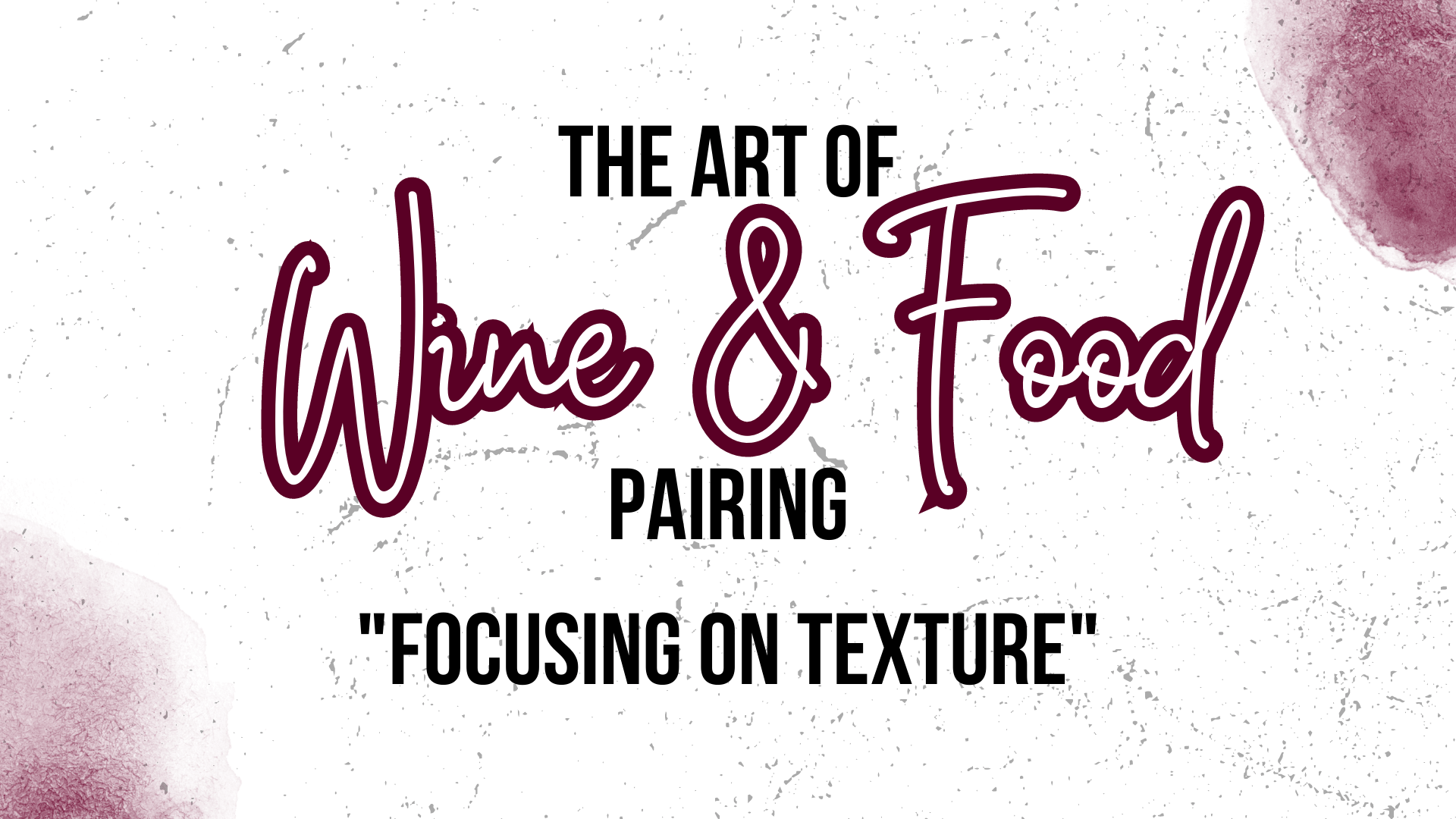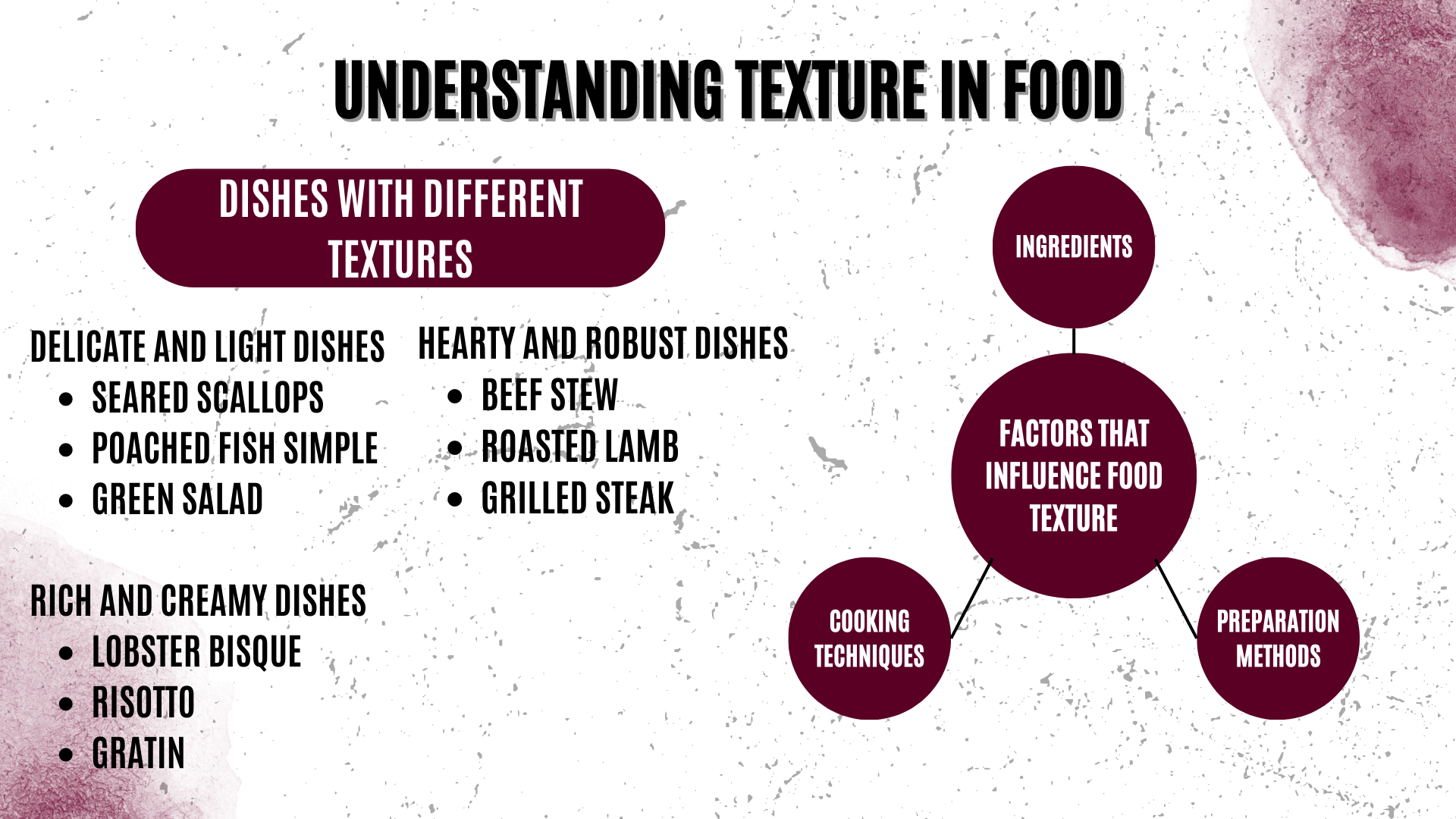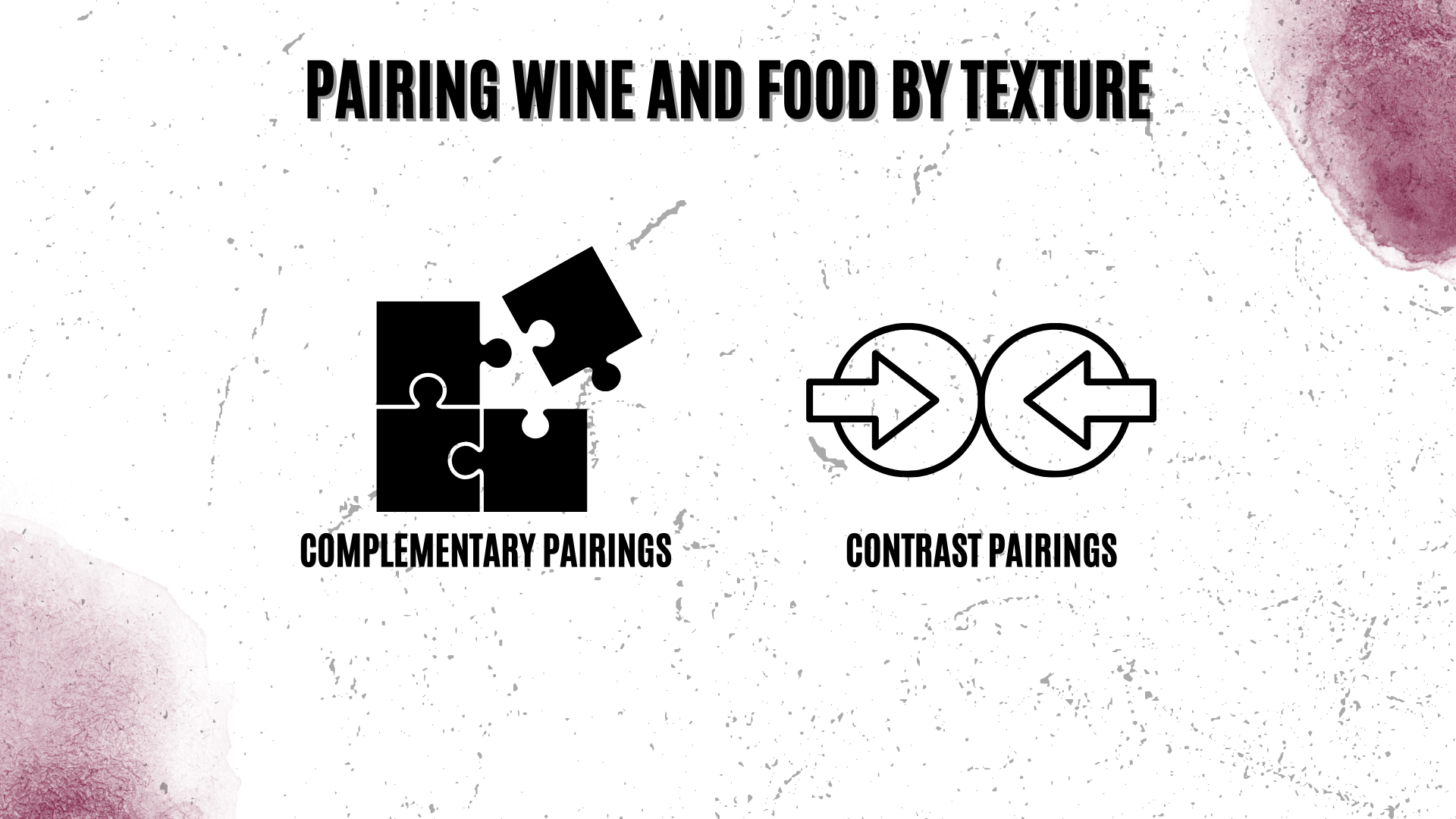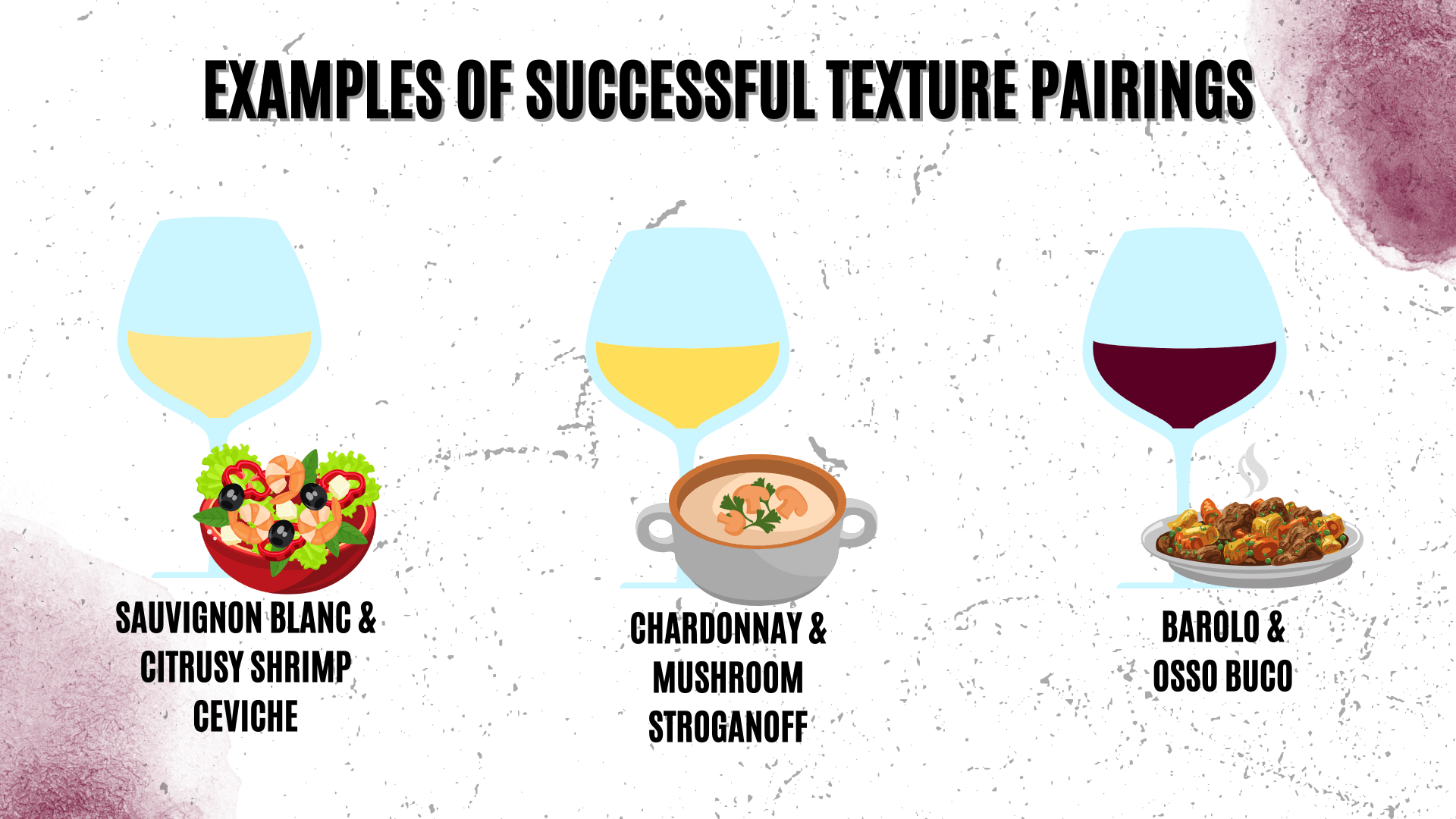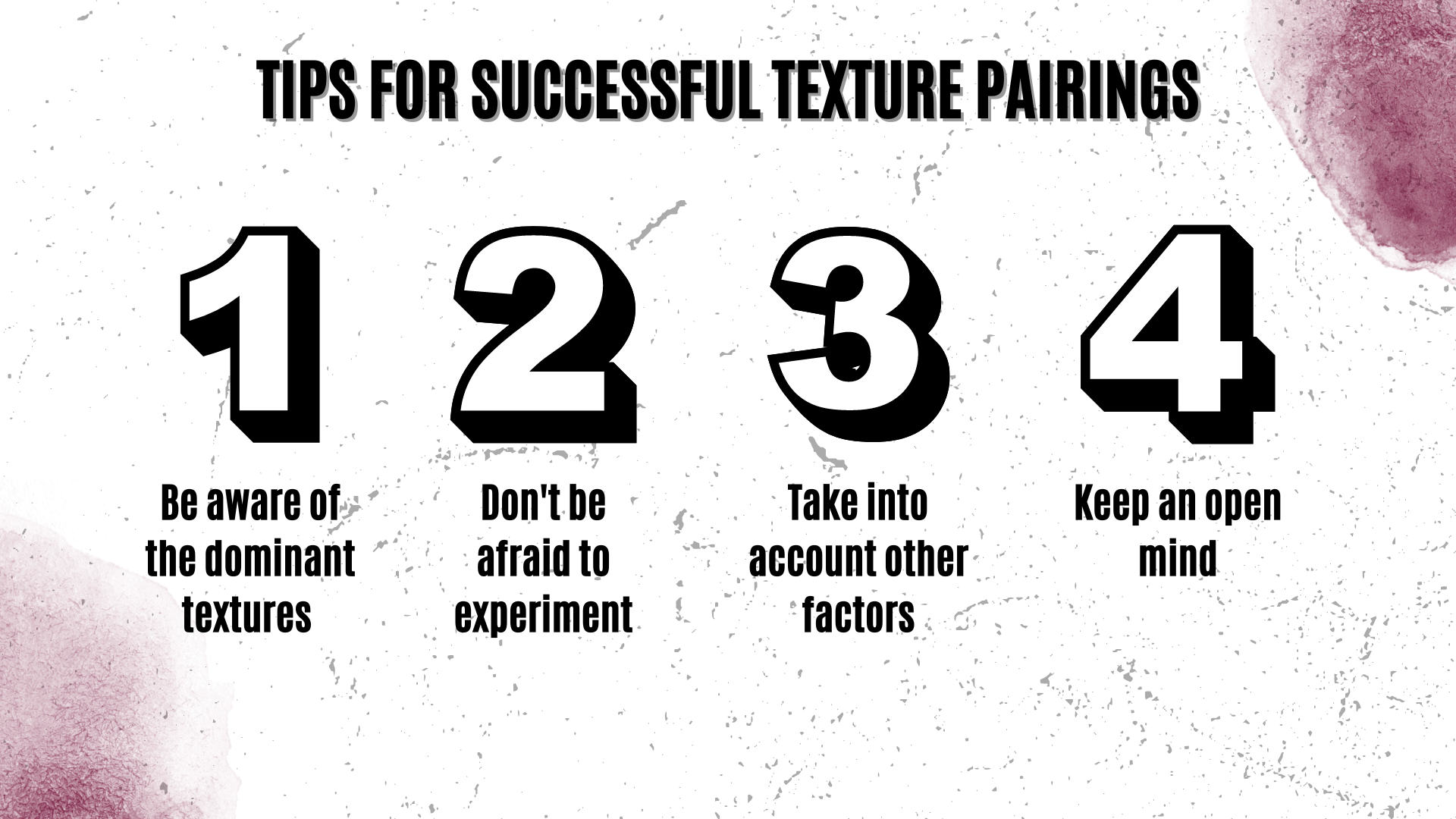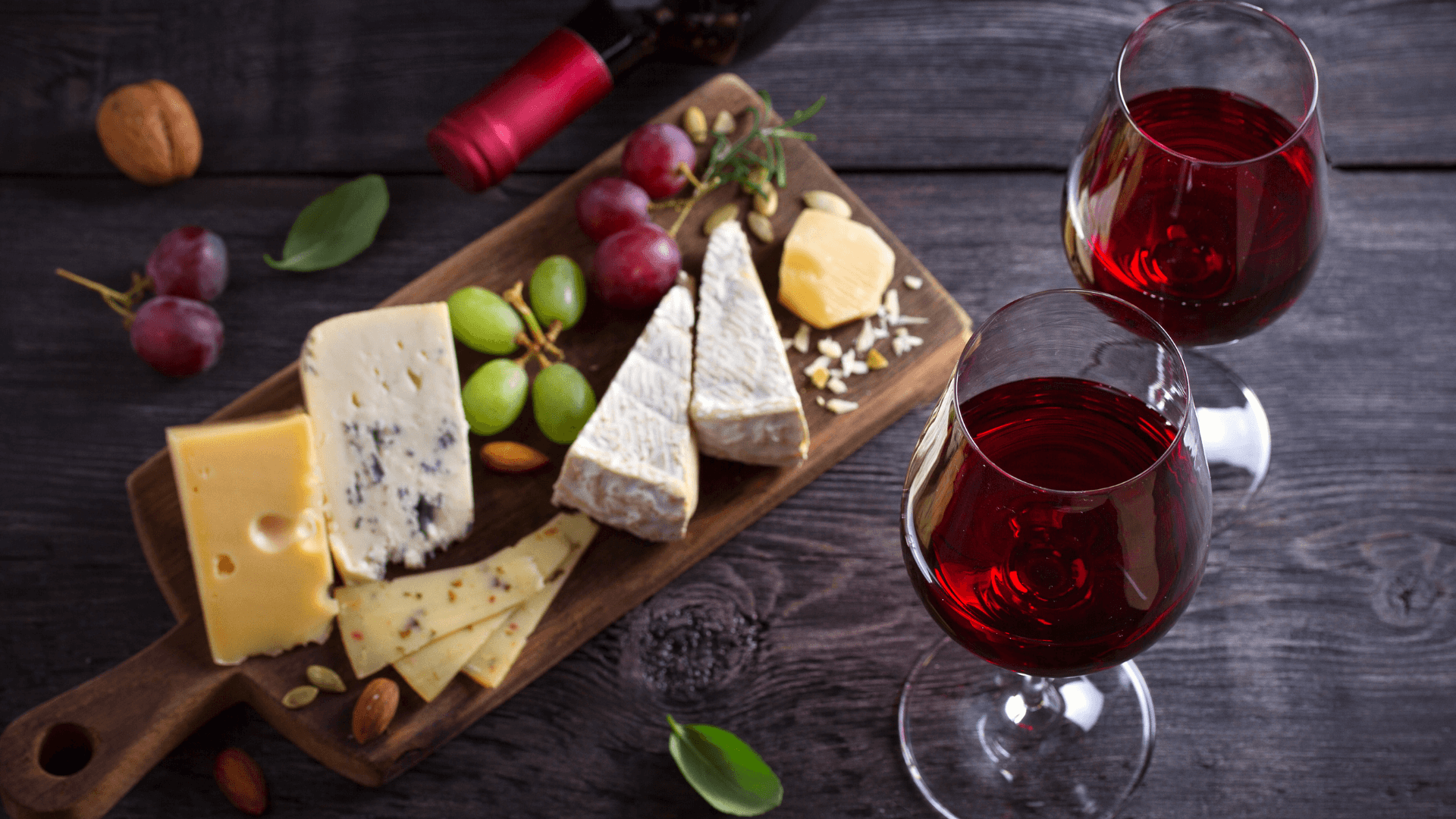Introduction
Pairing wine and food by texture is an often overlooked, yet essential aspect of creating successful and harmonious combinations. Understanding the concept of texture in both wine and food allows you to elevate your dining experiences and appreciate the role of texture in enhancing flavors. In this comprehensive guide, we’ll delve into the world of texture in wine and food, and provide expert tips and examples for mastering texture-based pairings.
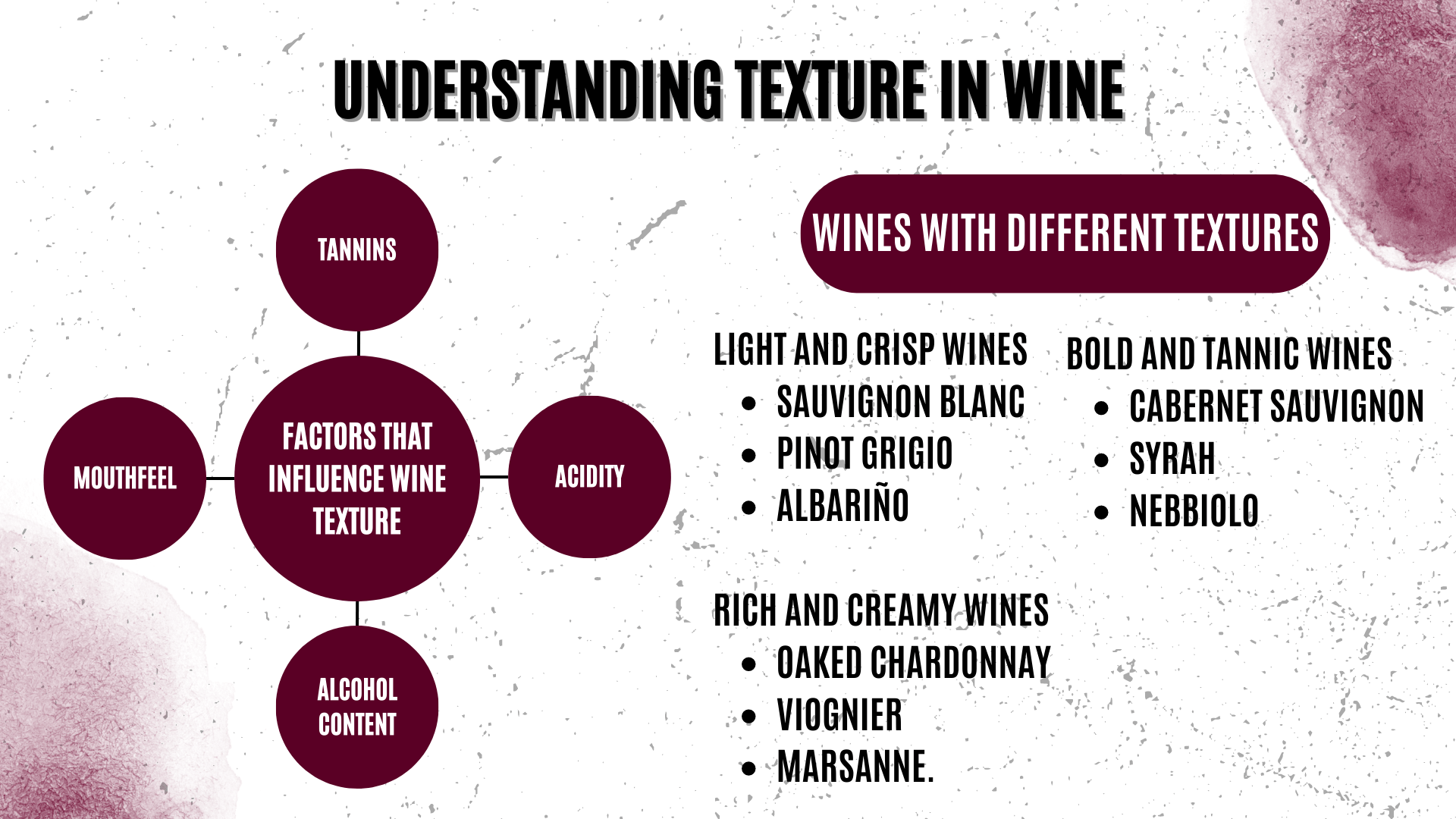
I. Understanding Texture in Wine
Texture in wine refers to the way it feels in your mouth, which is influenced by various factors, such as tannins, acidity, body, alcohol content, and mouthfeel. Recognizing the different textures in wine is crucial for successful food pairings.
A. Factors that influence wine texture
- Tannins – These compounds, found mainly in red wine, create a drying and astringent sensation in the mouth.
- Acidity – Wines with higher acidity levels tend to feel more crisp and refreshing on the palate.
- Body – A wine’s body refers to its weight and fullness, which can range from light to full-bodied.
- Alcohol content – Higher alcohol levels can contribute to a wine’s viscosity and warmth.
- Mouthfeel – This term describes the overall sensation of a wine in the mouth, including smoothness, creaminess, or sharpness.
B. Examples of wines with different textures
- Light and crisp wines – Sauvignon Blanc, Pinot Grigio, or Albariño.
- Rich and creamy wines – Oaked Chardonnay, Viognier, or Marsanne.
- Bold and tannic wines – Cabernet Sauvignon, Syrah, or Nebbiolo.
II. Understanding Texture in Food
Food texture encompasses the way a dish feels in your mouth, which is influenced by factors such as ingredients, cooking techniques, and preparation methods. Identifying the different textures in food is essential for creating successful wine pairings.
A. Factors that influence food texture
- Ingredients – Certain ingredients contribute to a dish’s texture, such as cream or butter making a dish creamy or nuts adding crunch.
- Cooking techniques – Grilling, frying, and braising can each impart unique textures to a dish.
- Preparation methods – Chopping, pureeing, or blending can alter a dish’s texture.
B. Examples of dishes with different textures
- Delicate and light dishes – Seared scallops, poached fish, or a simple green salad.
- Rich and creamy dishes – Lobster bisque, risotto, or a gratin.
- Hearty and robust dishes – Beef stew, roasted lamb, or a grilled steak.
III. Pairing Wine and Food by Texture
Creating successful texture pairings can be achieved through complementary or contrasting combinations. Additionally, you can explore regional pairings for successful matches.
A. Complementary texture pairings
- Light wines with delicate dishes – A crisp Sauvignon Blanc with a fresh seafood salad.
- Creamy wines with rich dishes – A buttery Chardonnay with a creamy lobster bisque.
- Tannic wines with hearty dishes – A robust Cabernet Sauvignon with a succulent steak.
B. Contrasting texture pairings
- Crisp wines with rich dishes – A zesty Riesling with a decadent foie gras terrine.
- Smooth wines with textured dishes – A silky Pinot Noir with a crunchy walnut salad.
- Bold wines with delicate dishes – A powerful Syrah with a tender seared tuna.
IV. Examples of Successful Texture Pairings
Here are a few examples of harmonious pairings based on texture:
- Pair a light, crisp white wine, such as a Sauvignon Blanc, with a delicate dish like a citrusy shrimp ceviche.
- Match a rich, buttery Chardonnay with a creamy dish like a mushroom stroganoff for a complementary pairing.
- A bold, tannic red wine like a Barolo can be paired with a hearty, robust dish like osso buco, enhancing the textures of both the wine and the food.
V. Tips for Successful Texture Pairings
To create harmonious wine and food pairings based on texture, consider these expert tips:
- Be aware of the dominant textures in both the wine and the food, and consider how they will interact.
- Don’t be afraid to experiment with different texture combinations to discover your personal preferences.
- Take into account other factors, such as flavor profiles and intensity, to create well-rounded pairings.
- Keep an open mind and be willing to try unconventional pairings, as they may surprise you with their compatibility.
Conclusion
Pairing wine and food by texture is a fascinating and rewarding aspect of the culinary experience. By understanding the role of texture in both wine and food, you can create harmonious and complementary pairings that enhance the flavors and enjoyment of your meals. With practice, experimentation, and an open mind, you’ll become a master of texture-based pairings in no time.
Frequently Asked Questions
Texture plays a significant role in the overall experience of a dish or a wine. Pairing by texture can enhance the enjoyment of both elements, creating a harmonious and complementary dining experience.
While texture can be a key consideration in wine and food pairings, other factors such as flavor profiles, intensity, and regional characteristics should also be taken into account to create well-rounded and successful pairings.
To identify the texture of a wine, pay attention to elements like body, tannins, and acidity. For dishes, consider the ingredients and cooking techniques used, as well as the overall mouthfeel and weight of the dish.
Some examples of successful texture-based pairings include a light, crisp white wine with a delicate dish like shrimp ceviche, or a bold, tannic red wine with a robust, hearty dish like osso buco.
While there are no hard and fast rules for pairing wine and food by texture, a general guideline is to pair wines and dishes with similar textures to create complementary pairings. However, don’t be afraid to experiment and try unconventional pairings, as personal preferences and tastes can vary widely.
Absolutely! Combining texture-based pairings with other techniques, such as pairing by flavor profile or intensity, can create even more nuanced and successful wine and food pairings. The key is to be open to experimentation and to trust your instincts and personal preferences.


